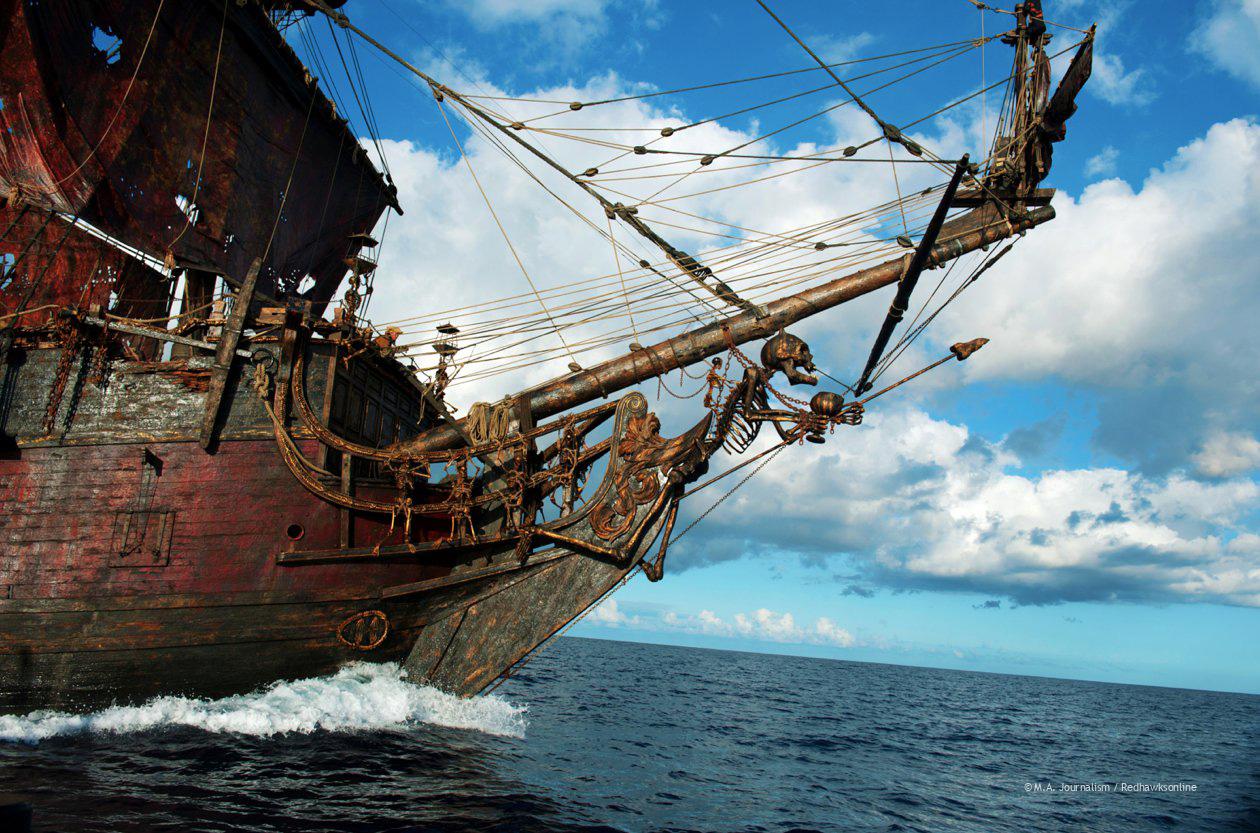Sparrow swashbuckles his way through another epic adventure
With the a few new mates
By Anna Scholl, Talon Staff Writer
A glint of wit and satisfaction reflects off of Jack’s gold-toothed grin as his lips drink in one last quenching drop of rum, his eyesight sinking deep into the map he held at his hands. An X marked the spot to an unknown area. “Drink up, me hearties, yo ho,” the familiar tune is sung off his lips one last time as his boat sails toward no where and anywhere.
The last scene from Pirates of the Caribbean 3: At World’s End left the audience wanting more. So why not give it to them? Four years later, Walt Disney’s pictures presented a new addition to the growing franchise with Pirates of the Caribbean 4: On Stranger Tides, a film that takes advantage of its fantasy-adventure with new characters, new storylines, and new Jack Sparrow-esque quirks.
Taking place roughly two to three years after the previous installment, the first noticeable feature about On Stranger Tides is the returning cast, and the lack thereof. The only recognizable faces in this sequel are Jack Sparrow (Johnny Depp), his first mate, Joshamee Gibbs (Kevin McNally), and Barbossa (Geoffrey Rush), who has taken a new side in working as a privateer for King George.
The first new character to be introduced is Angelica (Penelope Cruz), who encounters Jack as she is impersonating him. Following a cleverly shadowed doppelganger swordfight, the two set sail on the Queen Anne’s Revenge, the ship captained by the infamous Blackbeard (Ian McShane) himself.
Now, it’s an 18th century revision of “It’s a Mad Mad Mad Mad World” as the race to find the supernatural Fountain of Youth sets sail under high hopes for a new sword-clashing adventure.
Characters aren’t the only thing that’s new about this Pirates film, though. The first three Pirates of the Caribbean installments were directed by Gore Verbinski. The franchise was then placed in the hands of Academy Award-nominated director Rob Marshall, who’s best known for his film version of “Chicago”.
The inclusion of a director with a background for choreography helped enhance the vision of the movie’s fight scenes, clearly showing a better use of cinematography that helped in the imagining of a tavern brawl into pure pirate ruckus.
One of the main points of On Stranger Tides was to create a movie less complicated than Dead Man’s Chest or At World’s End, bringing back an easy-to-follow plot, the film successfully recalls Curse of the Black Pearl– but is also one of its downfalls.
There are times when the movie seems to take far too much of its simpler plot and forgets to read into unexplainable events that partake in several scenes, such as Blackbeards supposed crew of zombified miscreants and his ability to use voodoo magic.
But although Blackbeard’s seemingly endless plot hole of a character, Ian McShane’s take on the character saved the script writers with his savvy, ruthless, cutthroat performance that played a key role in the appeal of the film’s edge. One minute you’ll hate his villainous character, and the next you can’t help but praise his intelligently detestable charm.
Many fans of the first three films will be disappointed at the lack of Orlando Bloom’s and Keira Knightley’s star-crossed lovers sub-plot, but On Stranger Tides takes this into consideration with the arrival of Syrena (Astric Berges-Frisbey), a mermaid taken captive by Blackbeard, and Philip Swift (Sam Claflin), a young missionary who begins to act as her protector. The nature of their growing love is one not as complex as Will and Elizabeth’s, but it’s one that helps the audience relate more to the movie and feel more for the characters within it.
Okay, I’ll admit it: I’m the type who will dress up for the midnight premiere of any Pirates of the Caribbean installment, so I struggle to remain objective. However, Pirates of the Caribbean: On Stranger Tides, in all of its up and downs, was well worth the apprehensive four-year wait.

